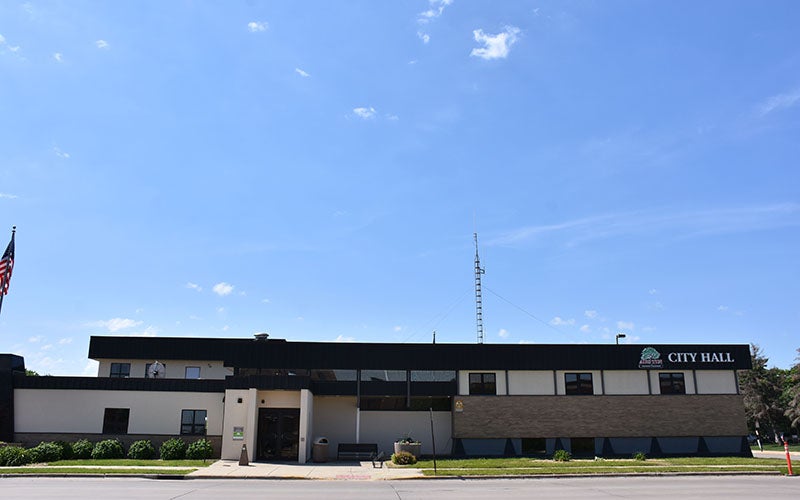Survey reflects lack of trust in leadership by City of Austin employees
Published 7:20 pm Tuesday, October 3, 2023

- Herald file photo
|
Getting your Trinity Audio player ready...
|
The Austin City Council, during its work session Monday night, briefly reviewed an employee survey conducted earlier this year in an effort to better clarify unrest among city employees.
What the survey reflects is an ongoing environment of distrust toward administration and low morale to a point that has raised eyebrows among council members.
The survey, conducted by Employee Solutions and summarized by Andy Zimney during a Sept. 12 council work session, showed an incredibly low satisfaction rate among employees of the city.
According to the minutes from that session, Zimney told council members that over 20 years, Austin’s survey scores are the lowest he had seen. While some on the council realized there was a growing problem between the city and its employees, the depth of the problem was still something of a shock.
“I expected them to be bad, but not the worst this company has ever seen,” said council member Joyce Poshusta, who along with at-large member Jeff Austin had been pushing for the survey. “It was sobering.”
According to the survey, involving 122 responses and 11 one-on-one interviews and 20 people participating in focus groups, Austin’s score, on average for positive responses, came in at 30% and that just 25% of people had positive responses for job satisfaction in the city.
Both of these numbers fell well below the 57% average for positive responses in first-time assessments.
“We were disappointed in the results,” Council member Geoff Baker said. “We clearly have a lot of work to do to address the issues.”
When employees were asked to name the single biggest improvement that could be made as an organization, they listed: new leadership, communication, to feel valued, a new human resource director and better benefits.
Regarding benefits, only 8% of people taking part in the survey responded positively.
For Poshusta, who is in her second term on the council, this issue has been at the forefront and something she’s been hearing from employees from the very start.
She said that earlier surveys of employee satisfaction showed generally positive reviews, but they were also conducted internally and brought up questions of whether or not employees felt they could be truthful with their answers.
Lack of trust was one of the areas Zimney highlighted for council members in September when he went through four areas that would need attention by the city. Zimney said during the session that while employees trust their co-workers, that trust drops and they say that leadership doesn’t have their best interests at heart.
It highlighted the need to use an outside organization to conduct the survey.
“We need a third party so these people feel they can give an honest opinion,” Poshusta said, with Baker making the same point.
“We couldn’t have done it ourselves,” Baker said. “We needed a third party … it validates others just so there is credibility.”
The other three areas noted in the survey that needed improvement included a lack of a cohesive vision by the city, lack of appreciation for employees and lack of leadership.
Some of those areas have been present in recent conflicts between the city and the Parks, Recreation & Forestry Board that culminated with the firing of previous director Dave Merill just days before he was to resign.
“Doing great things for the City of Austin has become a battle,” Merrill said in August, during an informal town hall meeting after he had been let go. “I urge you to cast eyes on the leadership and administration in the City of Austin. There are reasons people who care and fight to do things are leaving.”
During his presentation, Zimney cautioned the council that the problem has no quick and easy fix, but did suggest three areas to better address the problem including a two-day cross functional planning session to develop shared purpose, values and goals, launch a culture leadership team and develop an employee communication strategy.
All of these developments together have elevated an urgency to the situation.
“This is a number one priority for me right now,” Poshusta said. “What people tend to forget is that the employees are our biggest assets. We need to draw people in and they are taxpayers as well.”
For Baker, developments are a step toward finding a solution.
“I think that council member Poshusta and council member Austin really worked hard to get us to a point where we actually took a survey so we can stop arguing if it is a problem or not and identify a problem,” Baker said.
The next steps include presenting the results of the survey to employees throughout the day on Wednesday, with results from that being reviewed by the council again at a future board meeting.
Regardless of what these next steps look like, council members know that in some ways this is just the beginning and that the employees need to play an integral role in the solution.
“I think that the consultants really summarized it well when they said we have to work on vision, appreciation, trust and leadership,” Baker said. “I think there’s a lot of work that needs to be done.”
“I think we need to keep this at the top of our agenda and we need to get a game plan together immediately after the results,” Poshusta agreed.





